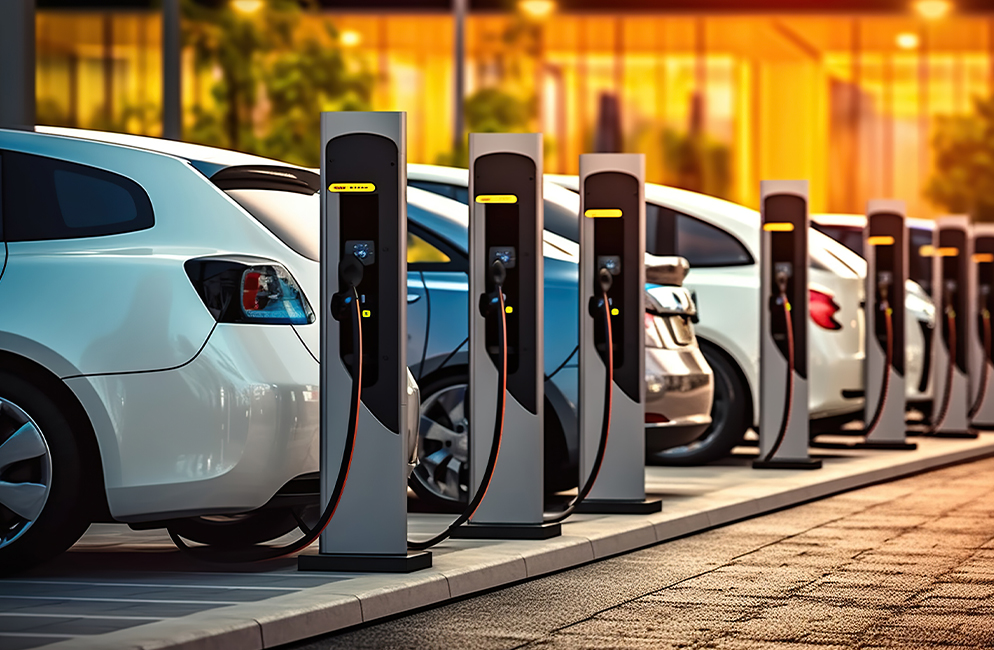The main reason for this rapid development is the mobility revolution. Acceptance of and demand for electric vehicles is growing at a fast pace throughout the world. Many countries will begin to ban the registration of new vehicles with combustion engines. Renowned car manufacturers such as Daimler, Volvo, Fiat, and Hyundai are aiming to completely electrify their fleets in the next ten to 15 years. They want to ensure they are well positioned for the future and meet their own emission reduction targets.
These developments are also increasing the pressure on battery production. The management consultancy McKinsey forecasts that meeting the high demand will require around 150 new large battery factories around the world to start production by 2030. The top priorities for such factories are energy-efficient production and constant production quality assurance.
Some steps require the strictest cleanroom conditions with minimal particle ingress and very low humidity to ensure that production is efficient and the battery produced can function safely while delivering maximum performance and lifespan.
Each battery goes through a number of highly specialized production steps. It is important to ensure the requirements for each step, including air quality.
Powders and liquid solvents are mixed to create pastes or slurries, which provide the basis for anode and cathode production. Since explosive dust-gas mixtures can form under such conditions, ATEX-tested filter solutions are essential to ensure dust removal and a safe environment. Liquid filtration systems also ensure that the coatings are pure and free from agglomerates.
In anode and cathode production, the relevant paste is applied to a support made of copper or aluminum respectively. The facilities for this step require cleanroom conditions with the lowest possible dewpoint. This is to ensure that fine dust does not endanger the purity and to prevent moisture in the air causing the lithium to react. The ISO 14644 standard permits a maximum of 1,000 particles measuring 0.1 micrometers in one cubic meter of air. It is possible to achieve ISO 3 conditions according to ISO 14644 while also guaranteeing high energy efficiency by using a combination of high volume flow HEPA H13 filters, desiccant wheels, and a cleanroom control system.
The air in the booth must also be free of particles when drying the electrodes, as hot air is blown directly onto the freshly coated films. The temperature reaches 150-180 °C (300-355 °F) and so HEPA H13 level high-temperature cassette filters are required.
In this step, the cathode and anode sheets are cut to size and stacked on top of each other using a separator for every other layer. They are then packed in waterproof, dustproof aluminum foil. Effective HEPA H13 filtration is also required in this step to prevent dust particles from damaging the electrodes and foreign bodies from getting into the battery and causing short circuits.
Once they are filled (usually with liquid electrolyte), the battery cells are charged for the first time. As the aluminum foil pouch has already been sealed, it is no longer necessary for the ambient air to meet cleanroom conditions. Reliable filtration systems without a HEPA stage are sufficient at this point.
The finished cells are assembled into modules and packages. This step does not require cleanroom conditions either. A customized solution increases the energy efficiency of the system as a whole without any compromises in critical areas. Permanent air quality control and vulnerability analysis is recommended for this and further steps.
It can be tempting to choose a solution that provides the same air quality level throughout every step. However, as there are several steps, each with different process air requirements, such a solution would deliver an unnecessarily high level of air quality for many of the steps. This in turn would result in an energy- and maintenance-intensive filter system that is expensive and hampers the achievement of sustainability goals. Freudenberg Filtration Technologies offers solutions that are tailored to the on-site conditions for every step of the process. With the battery manufacturer XALT Energy as a subsidiary of the Freudenberg Group, the practical challenges are well known, which is why we are able to develop solutions that are reliable, viable, and energy-efficient.
Freudenberg helps system manufacturers to develop and design production machines as well as to achieve compliance with the relevant filtration standards. Tailored filter elements and accurate CAD data facilitate the customer’s planning. Smooth operation is then ensured using high-performance filter elements and digital solutions for air control, corrosion control, and process control, as well as a comprehensive filter management service, which includes monitoring, filter replacement, and disposal.

Filtration solutions that are tailored to the various production steps using application-optimized filter elements ensure reliable, extremely energy-efficient provision of process air and constitute a cornerstone in this regard.
Source:
https://new.abb.com/industrial-software/industry-software-best-practices/battery-manufacturing
https://www.mckinsey.com/industries/automotive-and-assembly/our-insights/battery-2030-resilient-sustainable-and-circular
https://www.rolandberger.com/en/Insights/Publications/Battery-Monitor-2022-An-overview-of-the-battery-market.html
https://www.rolandberger.com/en/Insights/Publications/Battery-Monitor-2022-An-overview-of-the-battery-market.html
https://www.iea.org/data-and-statistics/charts/battery-demand-by-mode-2015-2020
https://www.tomsguide.com/news/which-car-companies-are-going-electric-and-when-everything-we-know-so-far